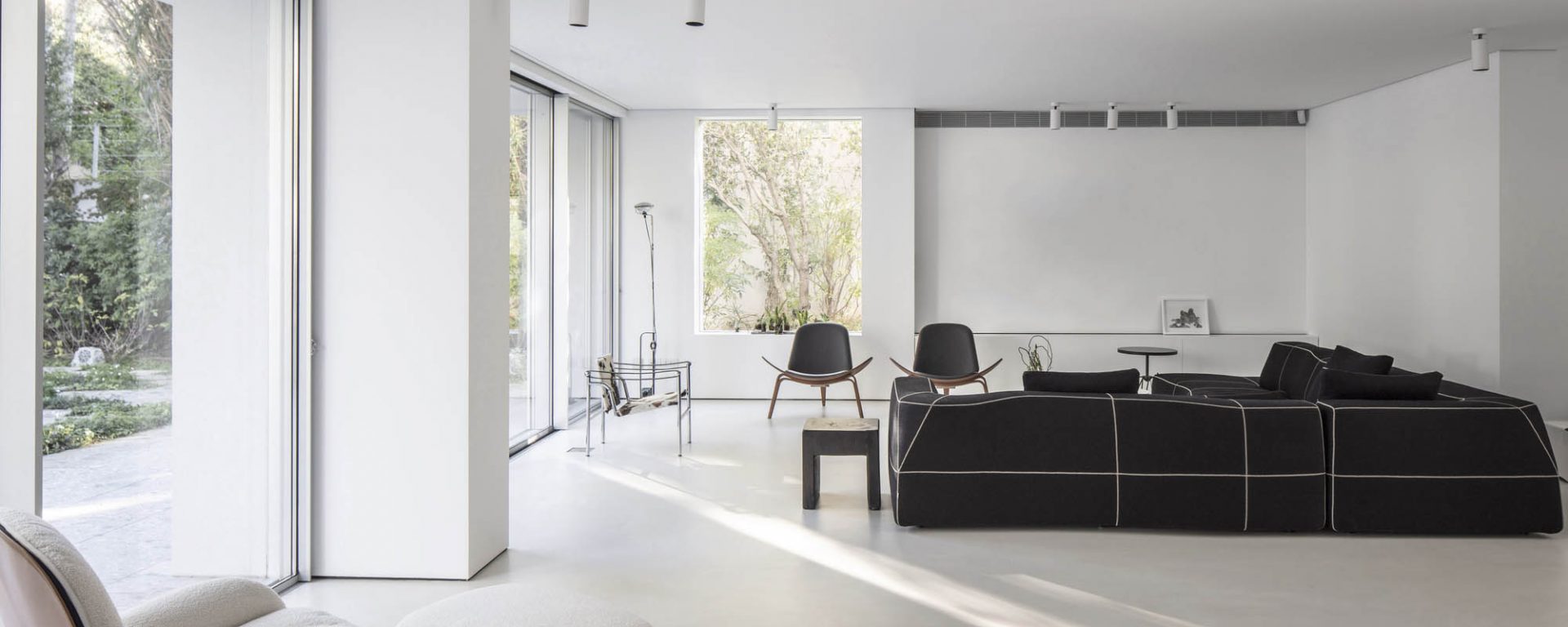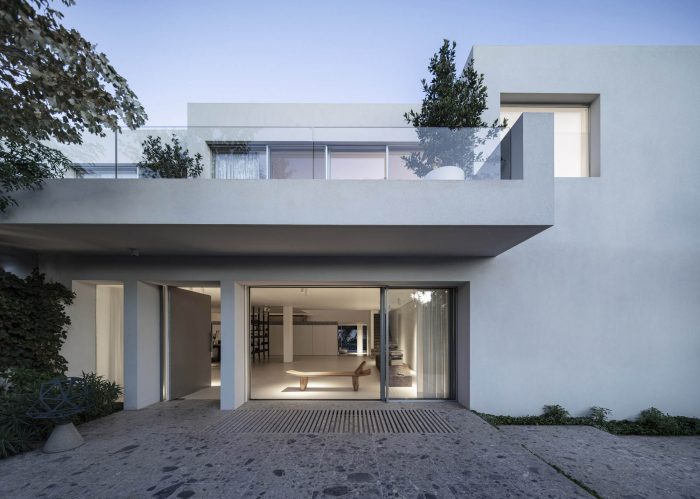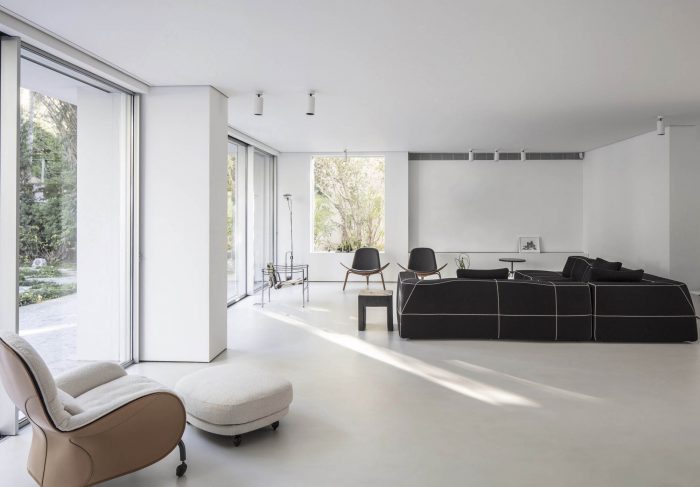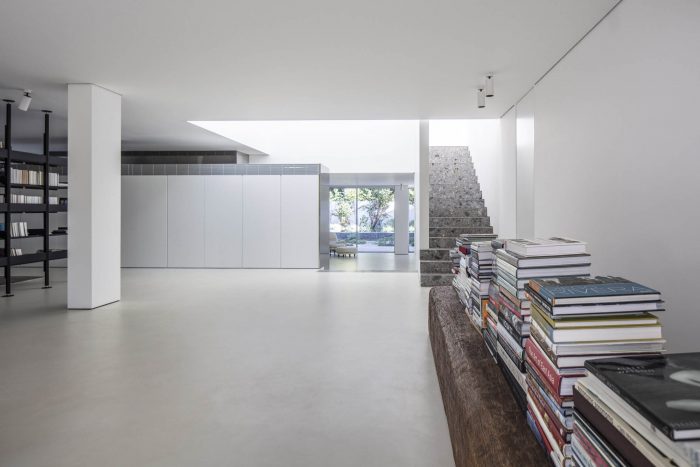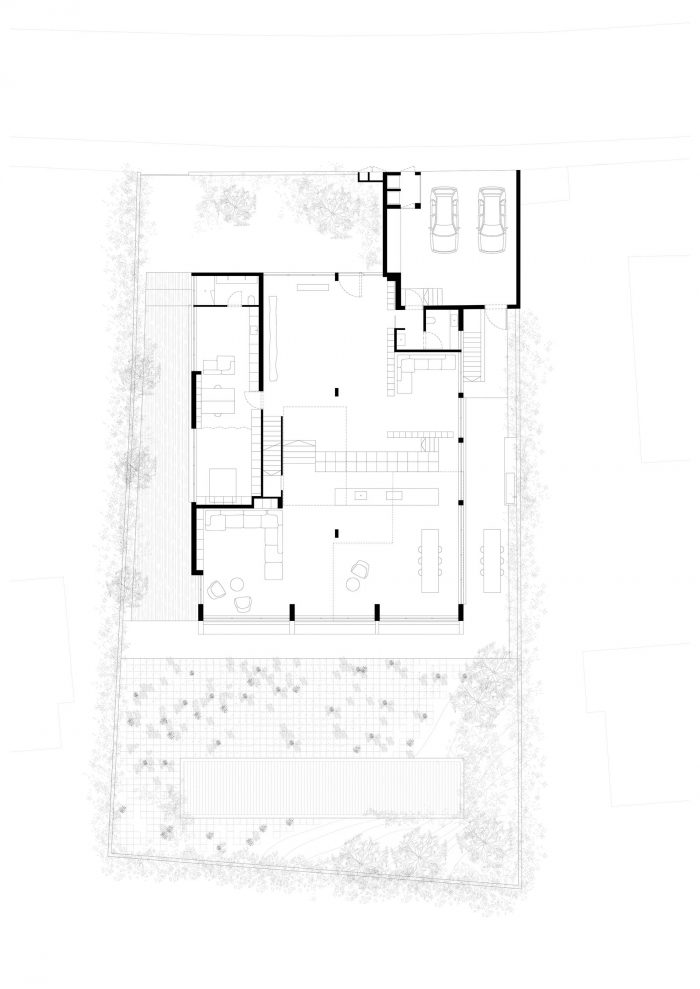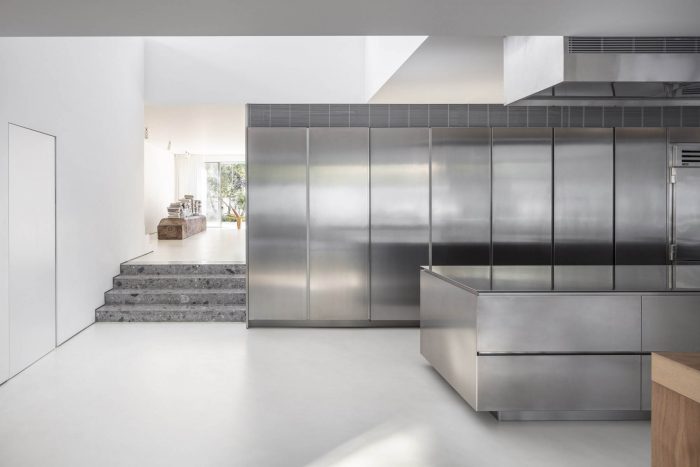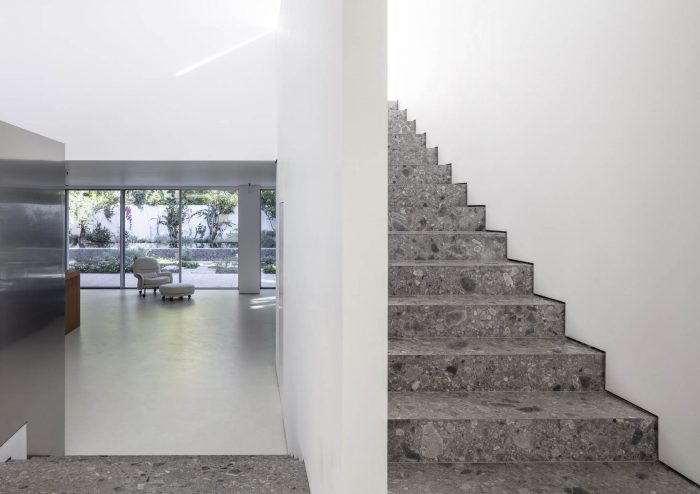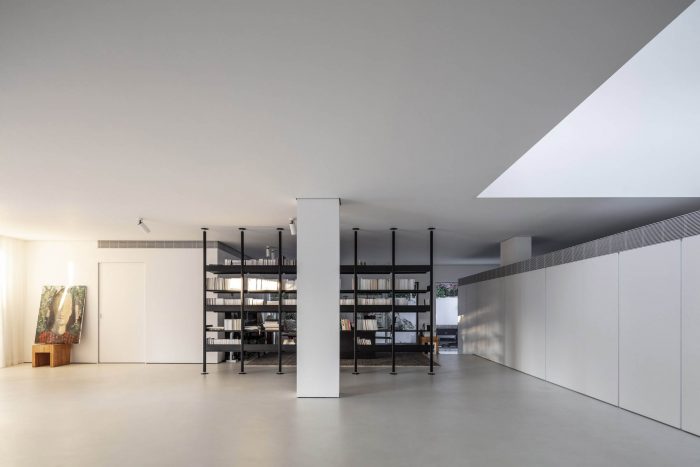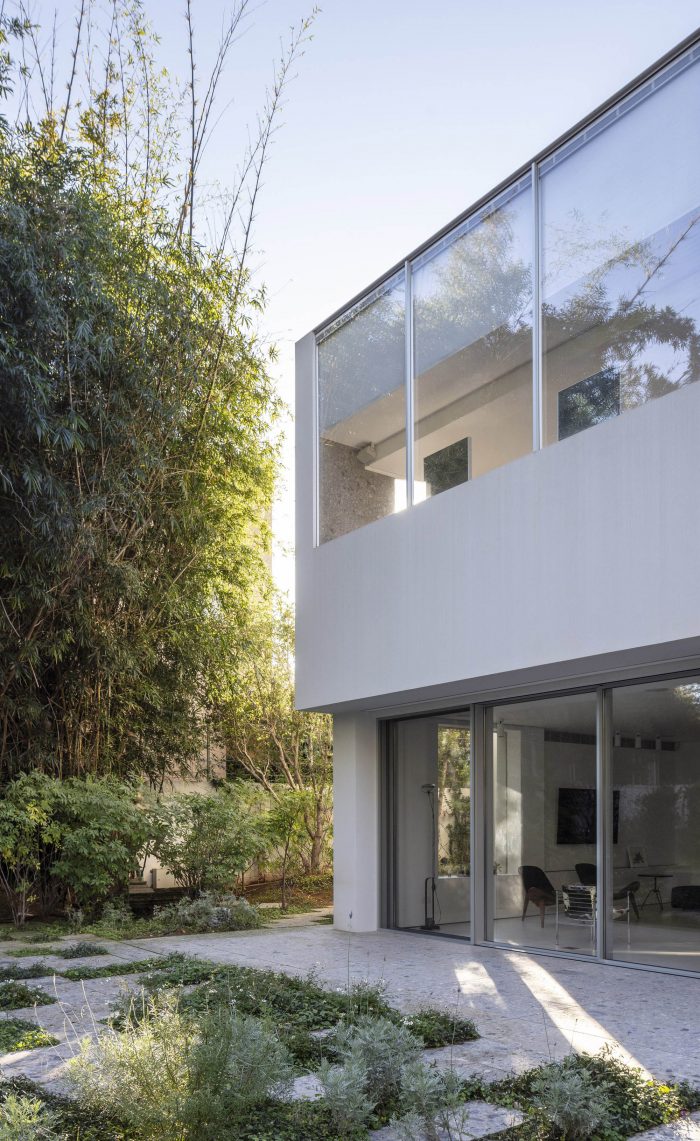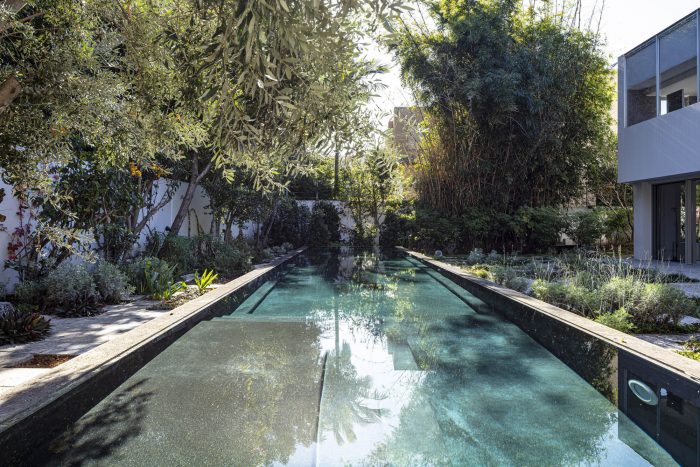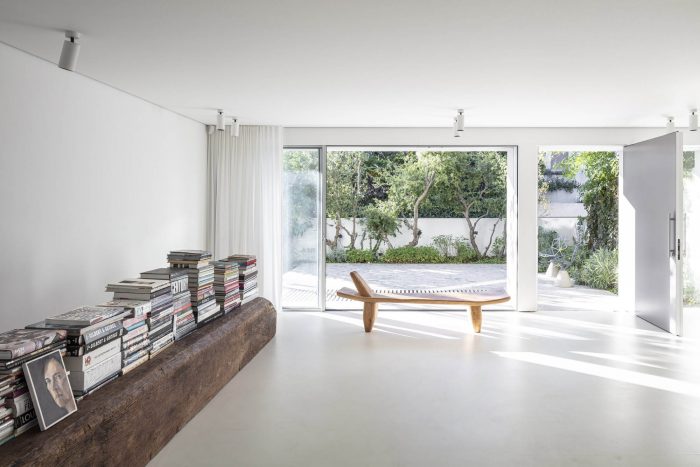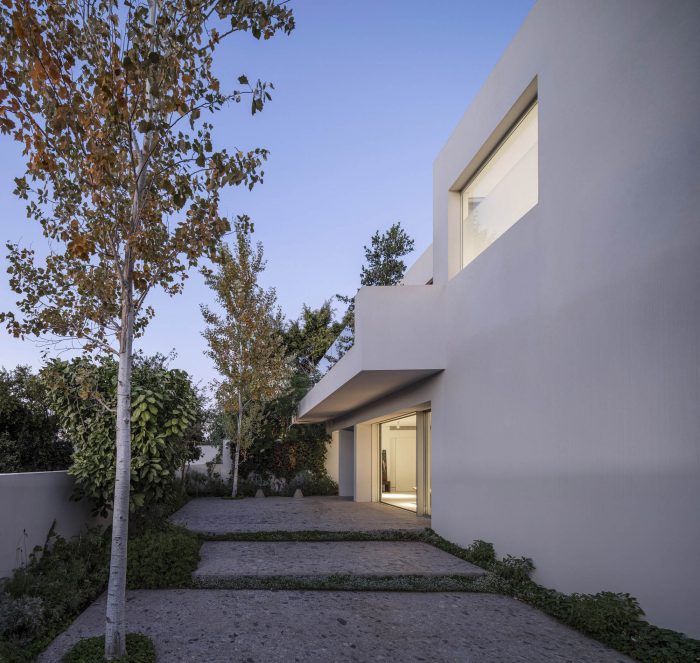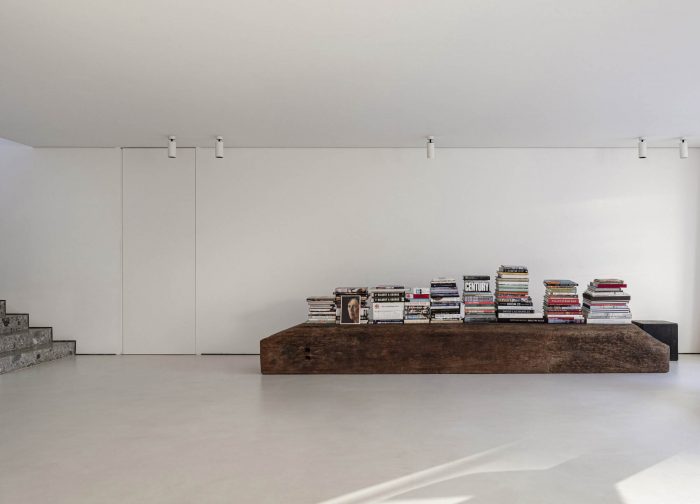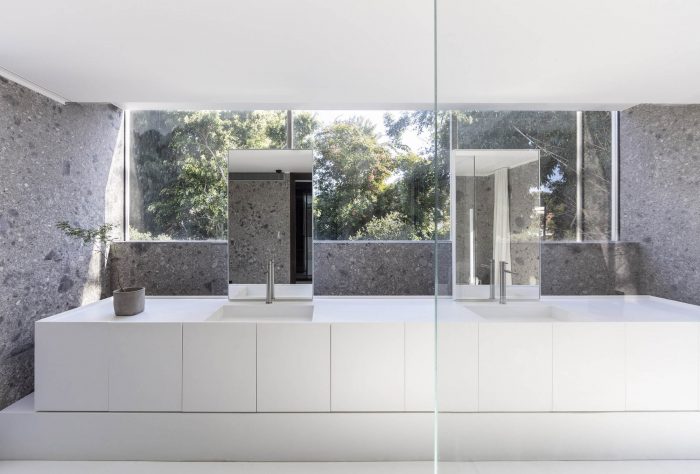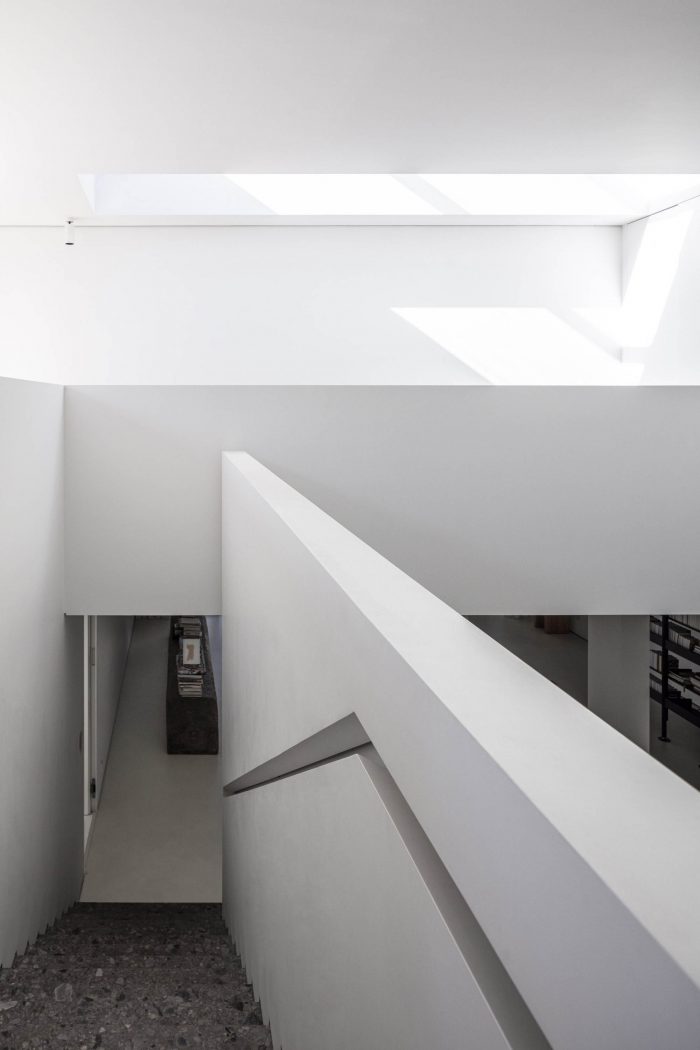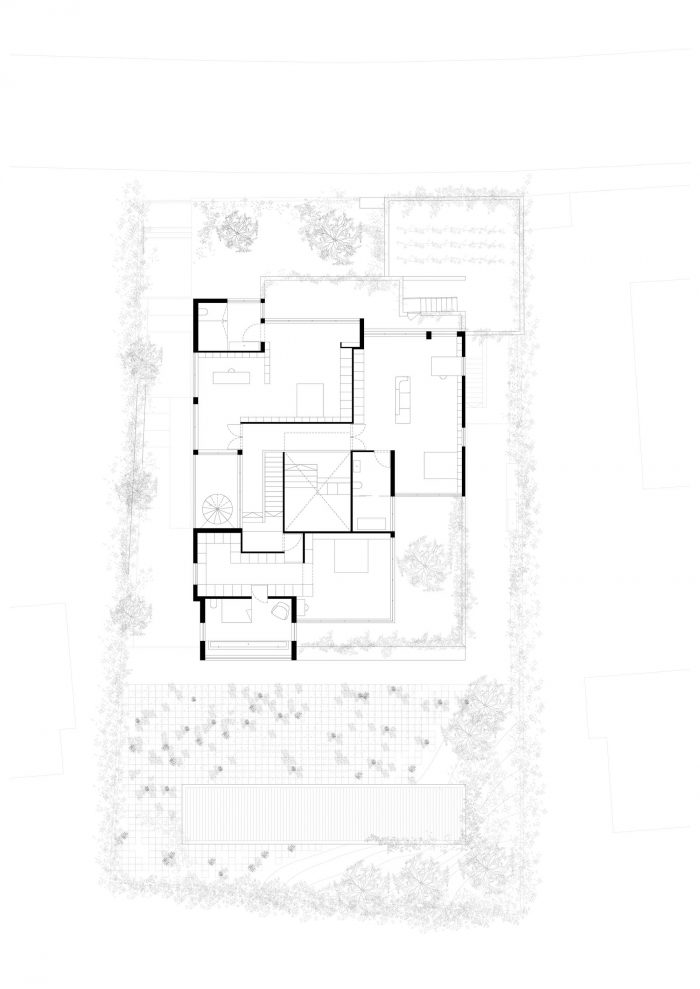虚空是尼什房子的建筑工具。这座建于70年代的房子所使用的构图技术,是为了把以前项目中隐藏的新的透视图带回来并加以塑造。这样做是为了创造一种新的氛围,让人沉浸其中,并与周围的自然相联系。虚空作为不同部分的衡量标准,是按照内部环境的不同深度来塑造的,同时也显示了内部和外部之间的视觉距离。
The void is the instrument of construction in the Nish House. The composition techniques used in this house, built in the ’70s, were to bring back and shape new perspective views, which were hidden in the previous project. This was done to create a new atmosphere of immersion and connection with the surrounding nature. The void as the measure of the different parts has been shaped following the various depths of the interior environment and at the same time, showing the visual distances between inside and outside.
第一个高距离(1)是穿过地面的距离,从入口(-0.95米)到物业末端的最内部的花园,像一个视觉箭头,让观众掌握整个场地的宽度。天顶光从置于南北轴线上的天窗透入。它被放置在居住区的核心位置,周围布置了通往一楼的楼梯和阳台。从这个地方,不同的视角在房子的较高部分之间创造了一个很深的距离(1),让人看到下面的地板。
The first high distance(1) is the one that passes through the ground level, from the entrance (-0.95 m) to the most internal garden at the end of the property, like a visual arrow that allows the viewer to grasp the breadth of the whole site. The zenithal light penetrates from a skylight, placed on the North-South axis. It is placed on the core of the habitation, around which are arranged the stairs that lead to the first floor and the balcony. From this place, the different points of view create a deep distance(1) among the higher parts of the house, leaving a glimpse of the floor below.
在一楼,现有的平面高度变化(从±0.00米到-0.63米)已经被简化,同时也被强调,分布在入口和花园层之间。第一条路有一个中心点,连接着入口和图书馆(±0.00米),并向前移动到餐厅和生活区(-0.63米)。从起居区可以欣赏到整个240平方米的底层空间,并通过天窗感受到星空的喜悦。
On the ground floor, the existing raumplan altitude changes (from ± 0.00 m to -0.63 m) have been simplified and at the same time accentuated, distributing them between the entrance and the garden level. The first path has a central point of view and connects the entrance and the library (± 0.00 m) and moves forward to the dining and the living area (-0.63 m). From the living area, it is possible to admire the 240 sqm of the ground floor as a whole and be delighted by the stars through the skylight.
同时,从图书馆到厨房(-0.63)有一条更隐蔽的第二条路径。视线被侧面的花园切断:一个外部空间,作为厨房和用餐区的功能区。这些视觉景观融合在一起,使居民能够改变视野,并更多地欣赏周围的绿色植物。各种形式的空旷,其抽象和不可捉摸的性质,被宽大的墙面进一步强调,这突出和增加了平静的想法,房子作为一个冥想的地方的感觉。
At the same time, a more hidden second path goes from the library to the kitchen (-0.63). The view is cut by the side garden: an external space that works as a functional area for the kitchen and meals area. These visual landscapes merge together, allowing the inhabitants to vary the views and to appreciate more the surrounding greenery. The void in its various forms, with its abstract and impalpable nature, is further emphasized by the wide wall surface, which highlights and increases the idea of calm, the sensation of the house as a place of meditation.
这个项目的功能程序是为了寻找各个居民的隐私。大女儿的公寓被安排在底层,有一个私人花园。在上层,有三套公寓:第一套为父母,第二套为小女儿,最后一套为儿子。在这些独立的单元中,阳台通向房子里比较偏僻的地方,比如屋顶花园,那里有干花园。儿子公寓的阳台与家庭果园相连,位于房子正面+5.80米处。
The functional program in this project was to look for the privacy of the individual inhabitants. The apartment of the eldest daughter has been organized on the ground floor with a private garden. On the upper floor, three apartments are located: the first one for the parents, the second for the younger daughter, and the last one for the son. In these independent units, the balconies lead to the more isolated areas of the house, like the roof garden, where the dry garden is located. The terraces of the son’s apartments are connected to the family orchard, located +5.80 m on the front side of the house.
运动区和健康区与建筑的所有功能区都位于下层(-2.65米),可以通过底层和通过侧面花园的独立通道到达。入口花园的地板是用ceppo di Gré的板子做的,我们在整个建筑中都使用了这种材料。这个花园是一个开放的房间,它作为公共区域和室内私密性之间的过滤器,可以用于社交活动。相反,边上的花园是对附近地区的功能,其特点是由高大的绿色植物制成的边框来保护场地。房子最私密和内部的核心是最后的花园,一个亲密的灵魂之地。这里有一个长长的水池,它反映了建筑和绿色。
The sports and wellness area are located, together with all the functional areas of the building, on the lower floor (-2.65 m), which can be reached through the ground floor and from independent access via the side garden. The floor of the entrance garden was made with slabs of ceppo di Gré, a material we used all over the building. This garden is an open room, which works as a filter between the public area and the intimacy of the interior, and can be used for social events. On the contrary, the side gardens are functional to the nearby areas and are characterized by borders made of high greenery to protect the site. The most private and internal heart of the house is the final garden, an intimate locus souls. Here there is a long water pool, which reflects the building and the green.
Architects: Paritzki & Liani Architects
Area: 1010 m²
Year: 2019
Photographs: Amit Geron
Lead Architects: Itai Paritzki, Paola Liani
City:Ramat Hasharon
Country:Israel

